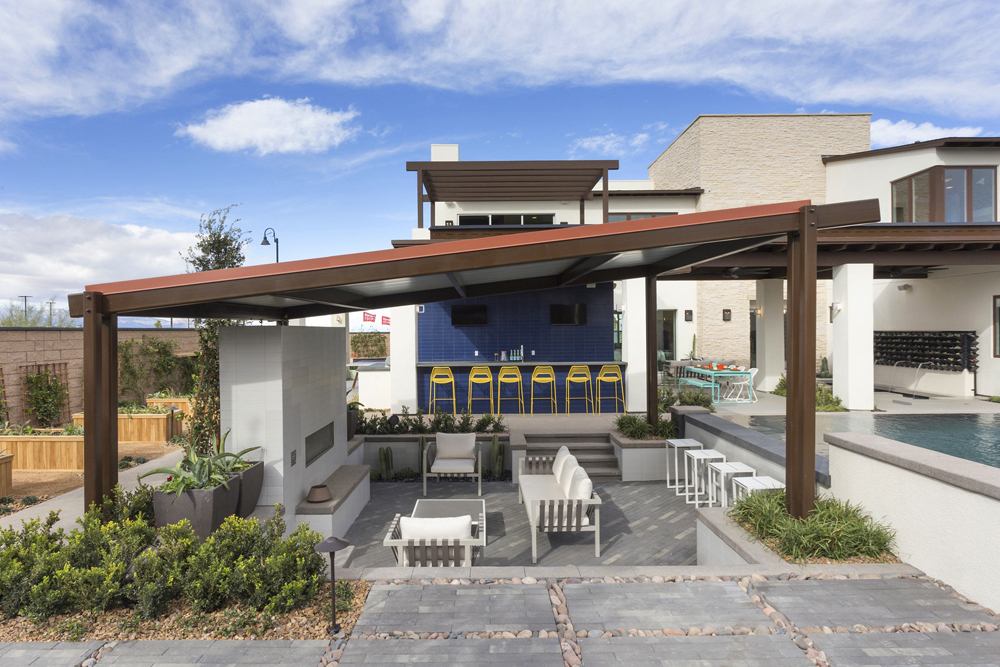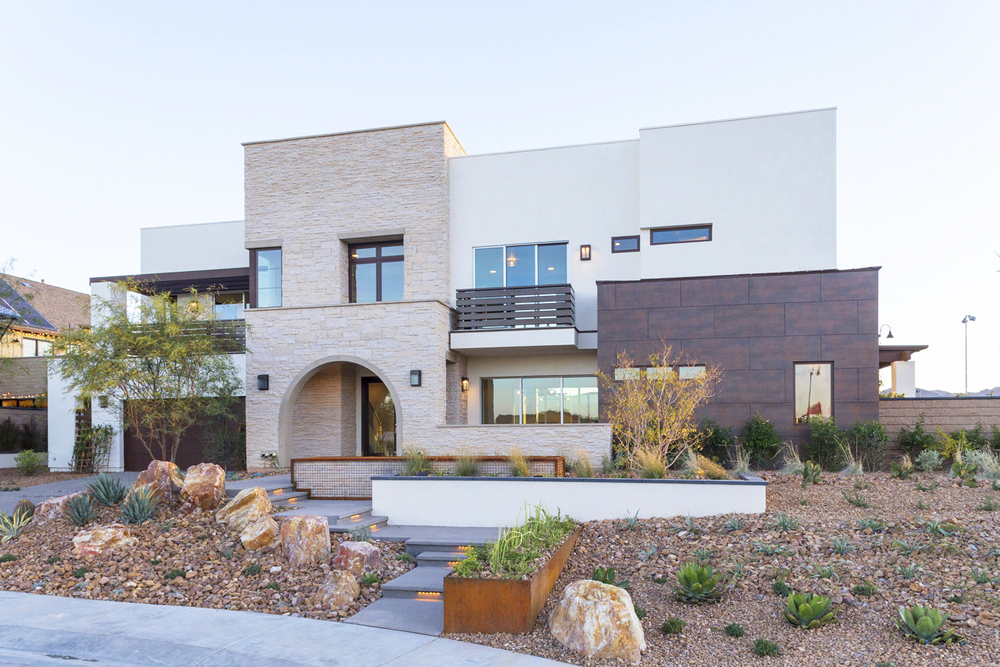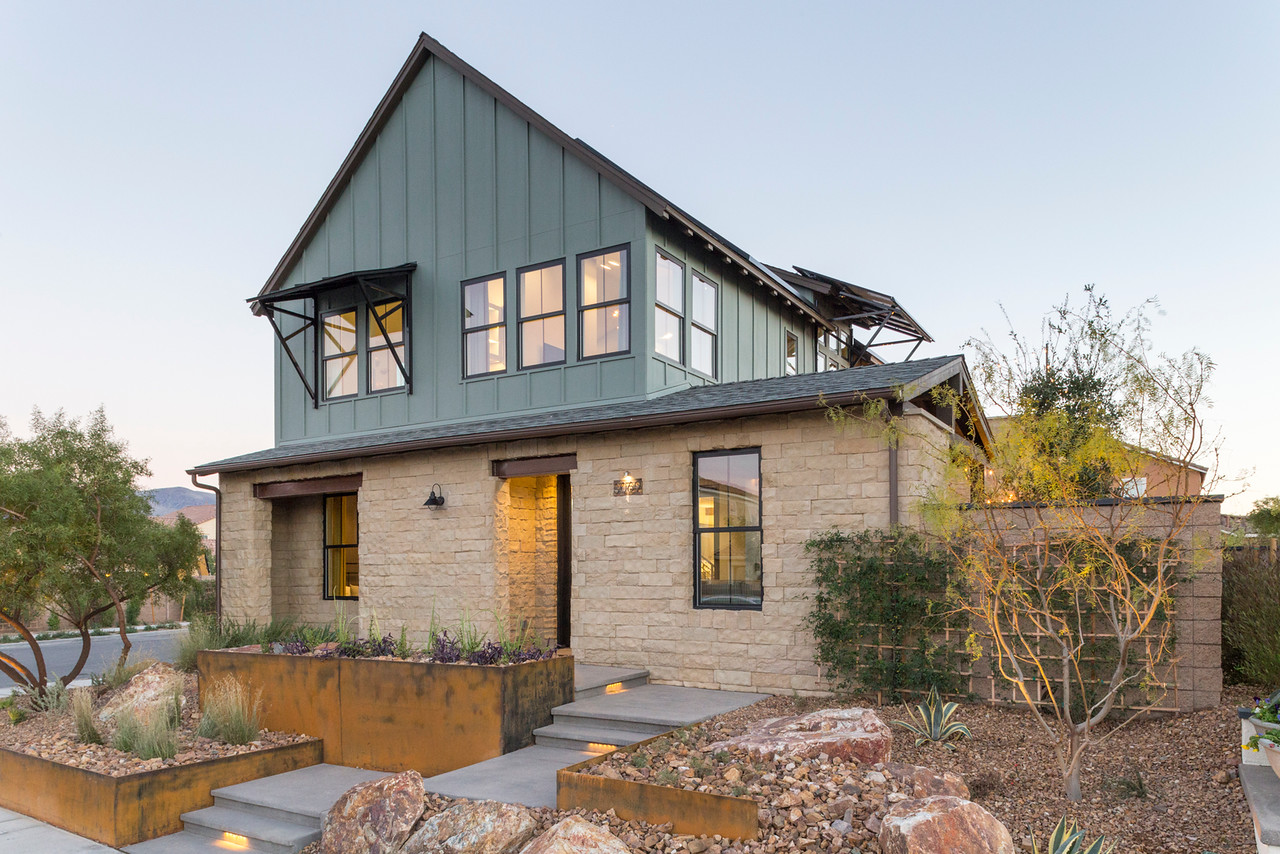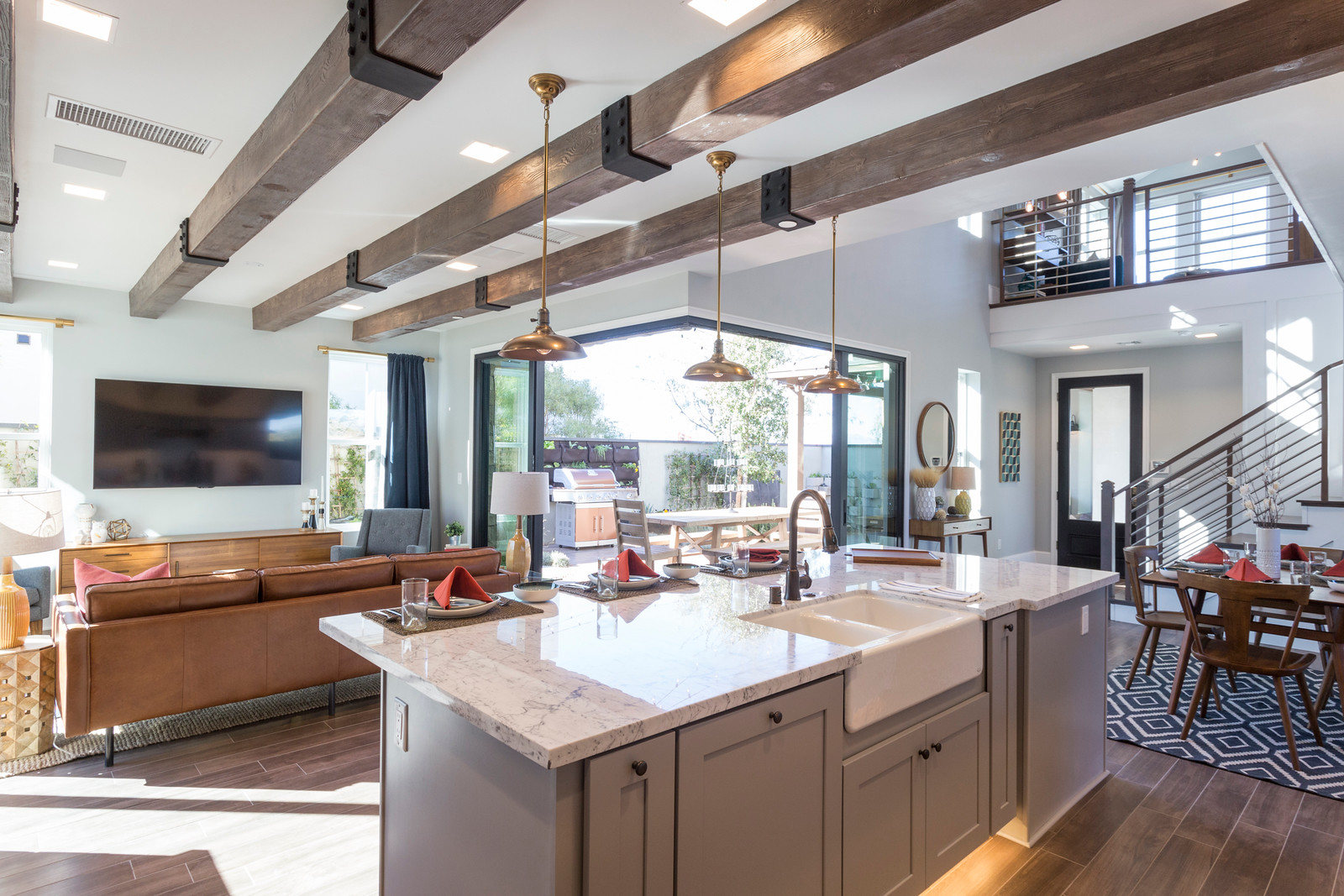“This stuff is very proven in Europe and Latin America,” says the younger Zeppelin. “It’s universal human values. It’s not everybody’s ideal, but some people want a version of urban housing that works for people throughout their lives. We just completed 50 units of family housing, and leased out almost immediately.”
The Taxi development, now part of the hip RiNo, or River North Art District, contains a child care center, maker’s studio, and community garden. It could be labeled peak millennial if it wasn’t so successful, so deeply considered, and so not meant for a single demographic. Zeppelin’s vision aims to be more sustainable and to support a lifetime of urban living.
“Everyone at these real estate conferences mentions millennials like 50 times, but the real estate market is slow moving and reactionary,” he says. “Developers are hung up on getting the most value per square foot. But for the people occupying it, it’s all about the value they’re receiving. A small footprint doesn’t matter to them if it’s, say, under $1,000 and gives them the amenities, functional space, and lifestyle they want. This campus-like setup offers people more of what they want, and more time to do what they enjoy. The American dream in the suburbs is overrated.”
For years, the conventional wisdom has been that millennials prefer urban living and the culture and excitement of the big, dense cities, want to be flexible and avoid owning a home, and if given a choice, would rent an apartment in a development like Taxi in a heartbeat. But as millennials age, and more marry and consider starting families, the numbers tell a different story.
It’s true that homeownership among this age group has traditionally been lower than in previous generations. But that may be more a function of delayed purchases due to millennials’ new financial reality: historically high student debt, recession, rising real estate costs, a challenging and stratified job market.
/cdn0.vox-cdn.com/uploads/chorus_asset/file/6669303/Curbed-Starter-Homes-Spot3.0.png)
Last year, millennials, the largest generation in American history,purchased 35 percent of homes sold in the U.S. Consider that the median age of the millennial generation is 25, and the average age of a first-time home buyer is 31, and it’s fair to say there’s a sizable wave of millennial homebuyers on its way. Realtors, urban planners, and home builders, not to mention city and local governments, have a lot riding on when, and where, this generation settles down. Predictions that this generation will permanently rent, or, if they do buy, will stay in cities forever, may have been premature.
The argument that millennials are permanently tied to cities ignores large swathes of the millennial cohort, focusing instead on the affluent portion of the demographic based in coastal cities with sky-high real estate prices. According to M. Leanne Lachman, a president of Lachman Associates, a real estate consulting firm, only 13 percent of this age group live downtown, mostly clustered in 11 magnet downtowns. Only about a third of the entire age group even identify themselves as urban.
The other two-thirds, or some of them, may be suburb-bound. “It may be overhyped,” says Adam Ducker, managing director at RCLCO, a real estate consultancy, of the potential wave of millennials moving to the suburbs. “But it’s still important. In a country of 350 million people, if 3 or 4 percent do something different, that’s vitally important. It’s important to not overstate the difference between generations. The real problem here is that nobody in the homebuilding industry is giving them a product they want.”
Other analysts agree that young first-time homebuyers, regardless of where they want to live, aren’t being given many options, and, explains Sarah Jones, the founder and CEO of Bamboo Realty, which specializes in urban realty in Texas, Denver, and Raleigh, millennials are left trying to work with the housing stock that’s available.
“With few affordable options right in the city, millennials are moving to close-in neighborhoods and buying the oldest homes,” she says. “They aren’t moving to the furthest suburbs with the newest and biggest homes, best schools or infrastructure. They’re living in the next closest place they can afford. The real estate industry is just fixated on the white-picket fence version of the American Dream, and the idea millennials will eventually get married, eventually buy a home, eventually have kids, and eventually move out to the suburbs. That’s a lot of eventuallys to depend on.”
And in their focus on potential futures, suburban towns and cities aren’t prepared for the realities and needs of the millennials who may arrive.
“The overarching point is that the suburban municipalities haven’t been as involved as they should be, since they believe the hype that millennials are going to live in the city forever,” says Ducker. “Suburbs should realize there’s a risk of corporations giving up on the suburbs. There are a lot of examples of companies saying that they can’t attract the talent they need in the ‘burbs. Suburbs shouldn’t just be thinking about attracting millennials to pay property tax. They need them here now to make sure the next generation of workers stays there as well.”
The millennial move to the suburbs has been predicted for years by the one group that everyone probably should have trusted in the first place: millennials themselves. In survey after survey, the percentage of young adults today who expect and want to own a home has been comparable to that of previous generations.
Brad Hunter, chief economist for HomeAdvisor, which studies housing and home improvement trends, expects millennials’ move to the suburbs to have a massive impact on housing trends even though this wave of buyers will have a lot of financial challenges to overcome. Both larger and more racially diverse than the baby boomers, and primed to continue to grow and diversify due to immigration, millennials are also downwardly mobile economically, according to Paul Taylor, former executive vice president of the Pew Research Center and author of the book The Next America, which examines future demographic and economic trends.
In addition to higher debt loads and lower savings, this generation owns fewer cars (among 20- to 24-year-olds, just76.7 percent have a license today, versus 91 percent 30 years ago). Taylor also points to the massive generational wealth gap that exists today as a big issue: the median wealth of a family headed by someone 65 and older is up 75 percent, while the household wealth for someone 35 and younger is down 30 percent. There’s a huge amount of money parked with older adults.
“Part of the definition of the American Dream was the notion of intergenerational mobility,” Taylor says. “Now, a more accurate statement about intergenerational mobility is: choose your parents wisely.”
Money, and the chance to earn more of it, has been a primary driver for young adults’ moves to cities over the last decade. While there will always be many motivated by a preference for urban living, this generation’s shift toward cities, and longer stay downtown compared to previous generations, can be explained, in part, by the economy. Daniel McCue of Harvard University’s Joint Center for Housing Studies believe there’s more than a bit of economic pressure informing the much-touted return to urban living.
/cdn0.vox-cdn.com/uploads/chorus_asset/file/6669383/Curbed-Starter-Homes-Spot2square2.0.jpg)
“The move happens right after a great recession hit both the housing and credit markets, which really had a big effect on people’s ability to buy a home,” he says. “It happened during a recession, and we haven’t seen a rebound or movement back towards homeownership.”
But that’s far from the entire story, according to Stockton Williams, executive director of the Urban Land Institute Terwilliger Center for Housing. In fact, though most portrayals of millennials focus on the college educated and affluent, the demographic’s average income is $22,000.
The difficult economic landscape has made financing a home a challenge for this age group—according to research by the financial advisory site NerdWallet, a majority of millennial homebuyers don’t meet the median credit score of 750 to obtain loans backed by Fannie Mae, one of the biggest players in the industry, and a third don’t meet the minimum credit requirement of 620.
“Most of them aren’t working tech jobs in coastal cities,” he says. “That’s not to dismiss the story of many of this generation returning to the city. But many are struggling economically, and that story hasn’t been told as much.”
Still, the real estate industry needs to know how to sell homes to the next generation of homeowners, whenever they purchase homes, and there the industry often falls short. Many have found the industry is both slow to respond to the specific issues facing today’s young adults, and failing to provide the service the next generation of homeowners want.
“Realtors and builders claim millennials are mercurial and hard to sell to,” says Ducker, “but they’re really more focused on boomers and existing owners moving up to more expensive homes, and not enough on first-time buyers. I think in part that’s because it’s hard to do something different. It seems pennywise and pound foolish to me. But after that whole industry shrank in the recession, there was such a dislocation. And as they got back to business, they went after the low-hanging fruit.”
Part of the problem stems from the generational divide between real estate agents and younger consumers. Realty is both an established and older industry—the average age of a realtor today is 57—and can occasionally have difficulty understanding the circumstances of younger customers.
According to Kristin Messerli, 28, founder of Cultural Outreach Solutions, a company that helps mortgage lenders connect better with millennials and multicultural homebuyers, there is a huge disconnect. Young adults, accustomed to having convenience and information at their fingertips, come to the table with more information than previous generations, and expect agents to be experienced guides who are accessible by text and provide constant updates. The industry has also done a poor job of recruiting a younger workforce, she says, even though there’s great potential.
Most millennials aren’t working tech jobs in coastal cities. Many are struggling economically, and that story hasn’t been told as much.
“It’s an attractive industry to millennials, but it’s not being understood that way by people my age” she says. “It seems like it’s happening in most other industries but this one. Millennials want to work for companies that let them feel like they have a purpose. Those in real estate say it’s a great job, they’re helping people make the most important financial decision of their lives. But those millennials outside the industry don’t see that part of the story.”
But it would be unfair to lay the blame just on real estate agents. Homebuilders also aren’t responding to the needs and updated preferences of millennials fast enough to meet the demands of a group entering prime homebuying years. While many expect the millennial preference for cities to remain unchanged, even those moving to the suburbs desire aspects of that urban layout and lifestyle.
“Millennials want walkability and convenience,” says Ducker. “They have a higher transit use propensity than those in the past, and they want to be within walking distance of shopping and dining. The problem with the existing suburban housing stock in America is that it just doesn’t provide that.”
Last year, one homebuilding company, Pardee Homes, which operates in California and Nevada, decided to challenge that notion. After commissioning research on millennial preferences from Ketchum Global Research and Analytics—sample insight: “while millennials want to move to the suburbs for the same reasons as generations before them, they now carry urban artifacts with them”—Pardee commissioned and designed two experimental homes in an effort to learn more about what this demographic wants.




The Responsive Home project, which included a farmhouse design with wood beams and an open interior, as well as a transitional design inspired in part by a gallery, were specifically built with the nation’s 77 million millennials, and their budgets, in mind. Even the more expensive model was predicated on the idea that with young adults putting off homebuying, many who decide to buy later in life will want a premium product.
“There’s a misconception about millennial homebuyers, that they don’t have enough money to make a down payment, that they don’t want to move to the suburbs,” says Linda Mamet, Vice President of Corporate Marketing at TRI Pointe Group. Pardee Homes is a member of the TRI Pointe Group family of homebuilders. “We need to get rid of that.”
According to 34-year-old interior designer Bobby Berk, who Pardee hired to translate his generation’s taste into a model home, the focus was on working with the architecture and imparting a sense of flexibility, and appeasing a less-is-more audience that doesn’t want the McMansions of their parents (“What’s the aesthetic of a millennial? You can’t define [77] million people.”)
For example, there’s a loft area in the farmhouse layout that can easily be converted into children’s bedrooms, and the open space above the dining room can be converted into an extra room with floor joists. And, in a bid to play to economic realities, both have what’s called an income suite, meant to serve as a rental property for Airbnb, a home office, or a bedroom for an older family member.
“The idea is that a homeowner says, ‘I can rent it out once a week and help pay my mortgage,’” he says. “We wanted people to feel like their home can work for them, since our generation has been slower to buy a home, or feels like they can’t afford it. I think we grew up around an older generation of excess, and saw what it did to everyone and the economy. It made us more of a less is more generation. That’s why I wanted these homes to be like what people would really live in.”
So far, the Responsive Home Project, built in Las Vegas, only exists as models, test homes to inspire and inform other Pardee buildings and subdivisions. It’s a more progressive take than many homebuilders have attempted, but far from enough to meet expected demand.
/cdn0.vox-cdn.com/uploads/chorus_asset/file/6669583/Curbed-Starter-Homes-Spot1.0.png)
According to Hunter, while there are plenty of cool urban infill projects and new designs that may cater to this group, they’re rarely affordable for a millennial looking for a starter home. Other big homebuilders have announced new products focused on younger, first-time buyers, but often, breaking new ground means locating homes farther and farther from core markets and urban areas. While the suburbs are undergoing their own evolution—becoming more diverse due to immigration, while still being home to roughly 80 percent of the nation’s jobs—there just isn’t as much open space to develop as there was 50 or 60 years ago.
“There is a relatively new movement among the homebuilding industry, to provide more homes that are considered entry-level,” he says. “DR Horton, [the largest home construction company in the country], has been the leader in this regard, now that they have established their Express Homes brand. These homes usually sell for under $200,000, but the tradeoff is that the buyer probably has a longer commute to work than in the more expensive areas. LGI Homes is following a similar strategy.”
With a smaller stock of affordable new starter homes, what’s a new family looking for a home to do? Some believe the solution may be renovation, especially in older suburbs closer to the urban core, which offer denser downtowns and transit connections to cities, but may have lost value over time as the population ages and attention moves elsewhere.
Hunter believes that renovations will be a much larger component of entry-level homebuying for millennials, compared to older generations. Many such homes may be more expensive and in established neighborhoods, but others offer affordable and transitional places to start a family. This shift, in part, explains why Home Depot and Lowe’s, and any retailer that has to do with home improvement, maintenance and repair, are seeing profits soar).
“There’s absolutely a huge phenomenon of millennials doing it themselves,” says Ducker. “They’re discovering neighborhoods that have these characteristics and truly fixing them themselves. These are more conventional, transit-served neighborhoods, places on Long Island like North Hempstead or South Orange, New Jersey. They weren’t as resonant with the last couple generations of buyers, they have great housing stock, conventional fabric, and walkability, and young buyers have been fixing them up.”
Ducker says these same buyers, used to smaller spaces, see the “bland” architecture of these homes as an opportunity to put their own stamp on their living space. A 1,200-square-foot, single-story bungalow has the potential for character, with extra effort. It allows them to reinvent housing stock that was left for dead.
Some suburban governments are helping to encourage this influx and taking progressive steps to be more attractive to new homeowners. Montgomery County, Maryland, on the fringe of the D.C. area, made headlines when it introduced a nightlife commission to help improve entertainment options. King of Prussia, Pennsylvania, known for a massive mall and autoparks, has been aggressively courting “millennial-friendly businesses” with a series of events, zoning changes meant to encourage dense, mixed-use development, and even branding.
While many of these marketing efforts and new products do speak to the real needs of this massive group of new homeowners on the horizon, the simple formula of better schools and more space at an affordable price still appear to be the main motivators. After years of thinkpieces and trendspotting reports speculating about what millennials want and how they’re changing everything, it turns out they may be looking for the same things as the generations that preceded them.
“There’s an enormous stock of attractive suburban housing in this country, lots of lovely neighborhoods in every metropolitan area in the country,” says Taylor. “What’s going to happen as boomers move out? That’s a huge real estate question.”